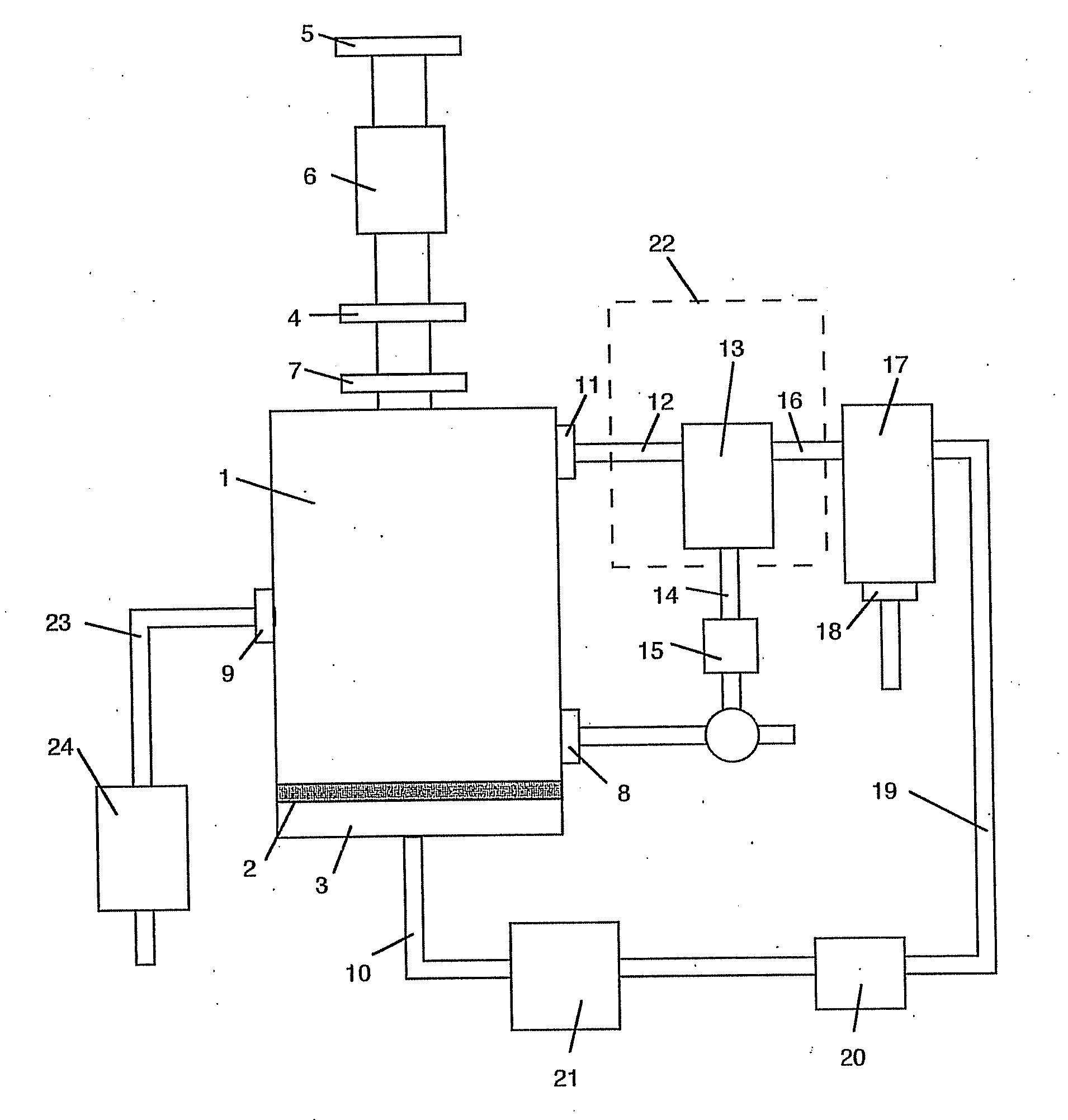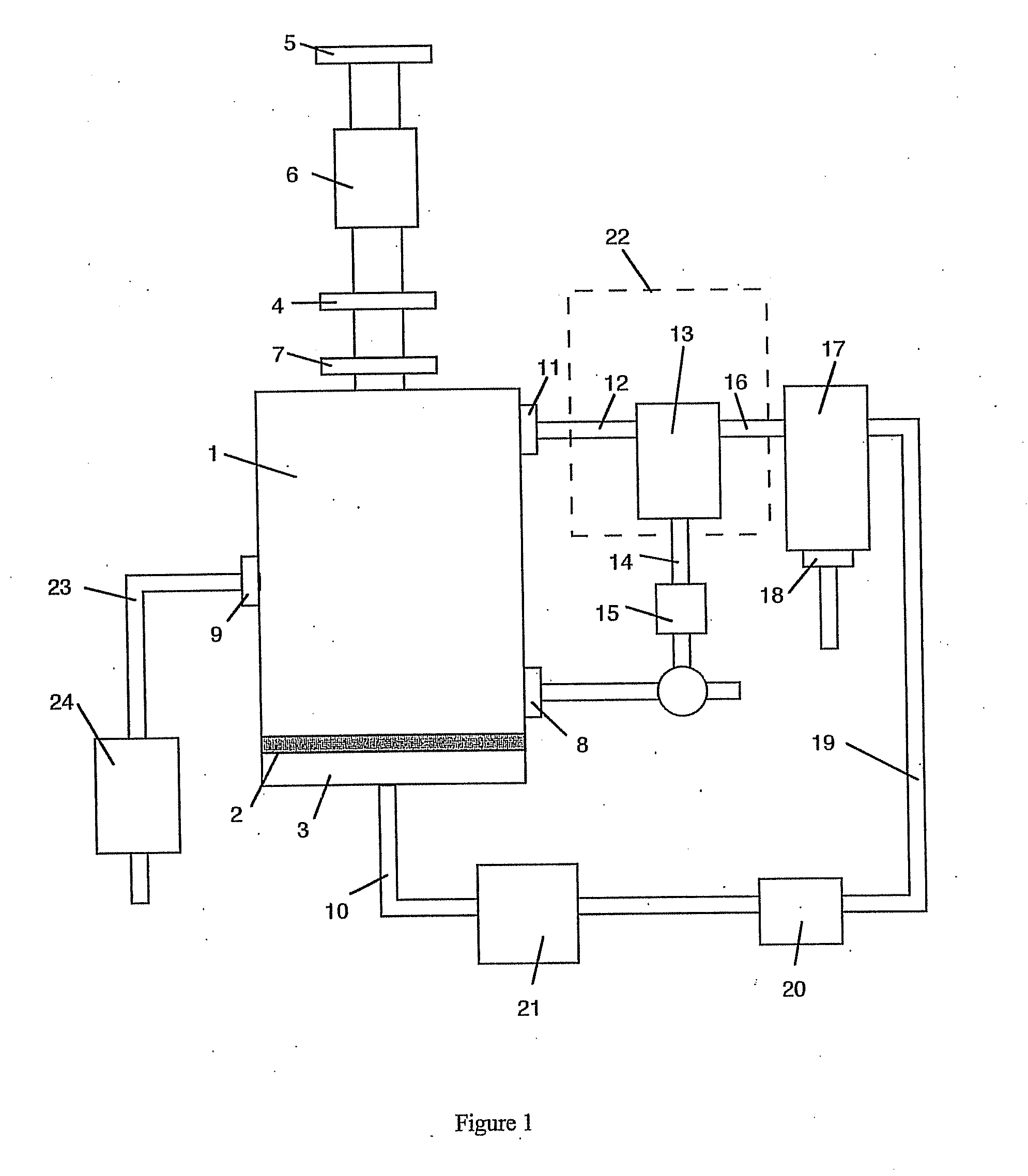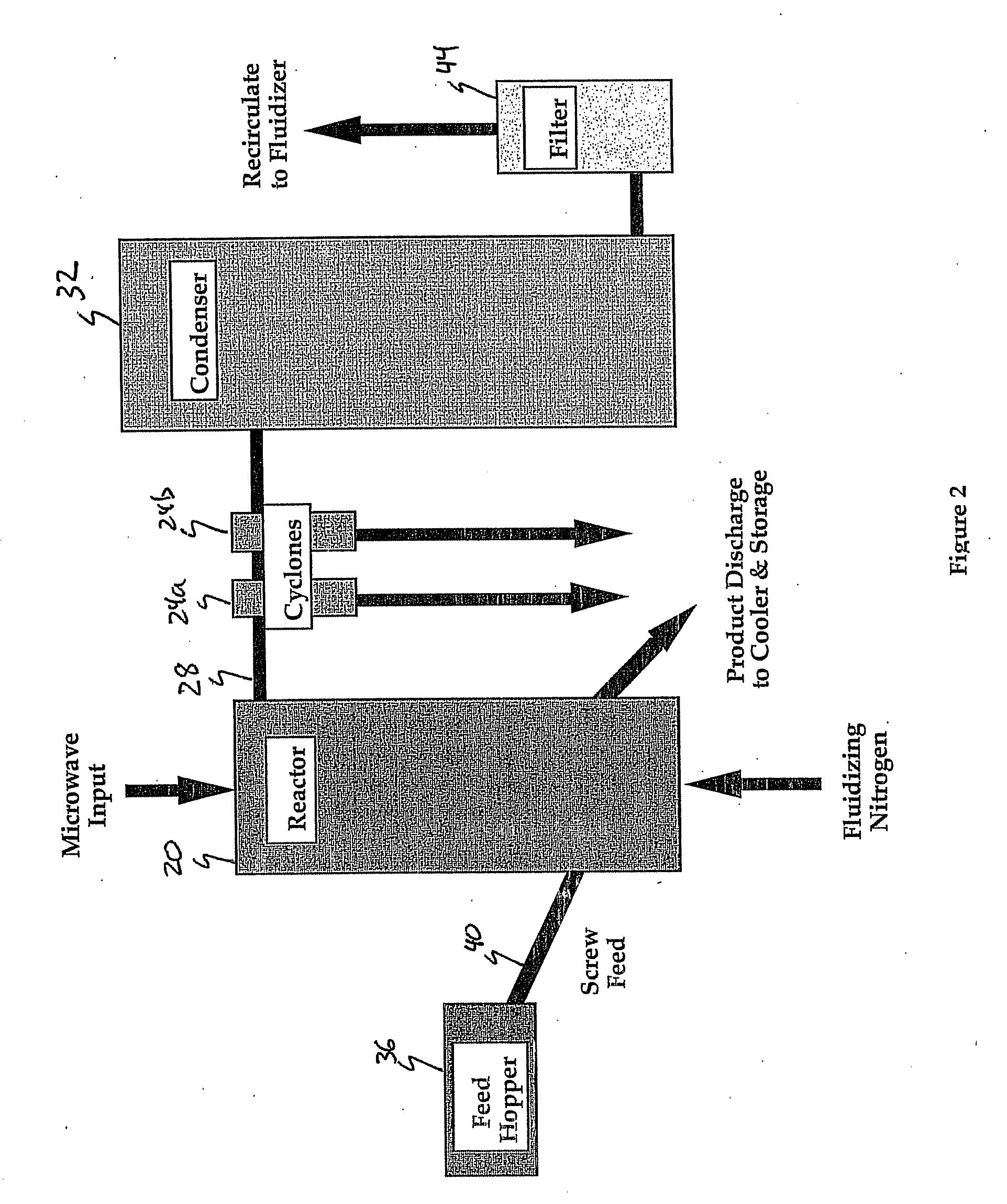Method and apparatus for microwave induced pyrolysis of arsenical ores and ore concentrates
a technology of arsenic pyrite and microwave induced pyrolysis, which is applied in the direction of chemistry apparatus and processes, arsenic compounds, antimony compounds, etc., can solve the problems of not being able to meet the requirements of a standard roaster
- Summary
- Abstract
- Description
- Claims
- Application Information
AI Technical Summary
Benefits of technology
Problems solved by technology
Method used
Image
Examples
example 1
[0067] The reactor was initially charged with a 50:50 mix (40 lb total) consisting of raw concentrate and Pyrrhotite (from previous pyrolysis). Extensive batch testing had demonstrated that a full startup charge of raw concentrate would produce a large, rapid discharge of AsS as the temperature reached pyrolysis (about 550° C.). This AsS discharge tends to plug the piping at the cyclone(s), particularly if the pipes are not maintained above pyrolysis temperature.
[0068] The reactor charge was initially heated by microwave power as a batch load; when the temperature reached approximately 500° C. the material feed was commenced and thereafter the reactor operated in a continuous-feed mode. At shutdown, the microwave energy was stopped, the feed screw was stopped, and the fluidization was continued until the charge cooled below pyrolysis temperature. Material left in the reactor (labeled “Reactor Calcine”) as well as at all collection points was measured for mass balance.
[0069] Target...
example 2
[0073] The reactor was initially charged with a 50:50 mix (40 lb total) consisting of raw concentrate and Pyrrhotite (from previous pyrolysis).
[0074] The reactor charge was initially heated by microwave power as a batch load; when the temperature reached approximately 500° C. the material feed was commenced and thereafter the reactor operated in a continuous-feed mode. At shutdown the microwave energy was stopped, the feed screw was stopped and the fluidization was continued until the charge cooled below pyrolysis temperature. Material left in the reactor (labeled “Reactor Calcine”) as well as at all collection points was measured for mass balance.
[0075] Target operating temperature was 550° C. with feed rates of 0.5-1.0 lb / minute. Only the arsenic pyrolysis reaction was intended.
Initial charge:40 lb (50:50 mix of Raw concentrate and Pyrrhotite)Material feed:103.95 lbTotal material:143.95 lbTest duration:240 minutes (from start)Test duration:180 minutes (from initial pyrolysis)S...
example 3
[0079] The reactor was initially charged with a 50:50 mix (40 lb total) consisting of raw concentrate and Silica flour.
[0080] The reactor charge was initially heated by microwave power as a batch load; when the temperature reached approximately 500° C. the material feed was commenced and thereafter the reactor operated in a continuous-feed mode. At shutdown the microwave energy was stopped, the feed screw was stopped, and the fluidization was continued until the charge cooled below pyrolysis temperature. Material left in the reactor (labeled “Reactor Calcine”) as well as at all collection points was measured for mass balance.
[0081] Target operating temperature was 600° C. with feed rates of 0.5-2.0 lb / minute. Only the arsenic pyrolysis reaction was intended.
Initial charge:40 lb (50:50 mix of Raw concentrate and Silica Flour)Material feed:176.65 lbTotal material:216.65 lbTest duration:300 minutes (from start)Test duration:220 minutes (from initial pyrolysis)SamplesCalcine @ T2060...
PUM
| Property | Measurement | Unit |
|---|---|---|
| frequency | aaaaa | aaaaa |
| frequency | aaaaa | aaaaa |
| temperature | aaaaa | aaaaa |
Abstract
Description
Claims
Application Information
 Login to View More
Login to View More - R&D
- Intellectual Property
- Life Sciences
- Materials
- Tech Scout
- Unparalleled Data Quality
- Higher Quality Content
- 60% Fewer Hallucinations
Browse by: Latest US Patents, China's latest patents, Technical Efficacy Thesaurus, Application Domain, Technology Topic, Popular Technical Reports.
© 2025 PatSnap. All rights reserved.Legal|Privacy policy|Modern Slavery Act Transparency Statement|Sitemap|About US| Contact US: help@patsnap.com



